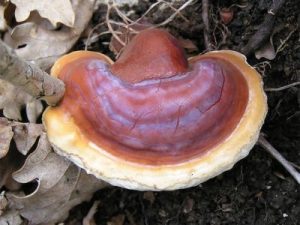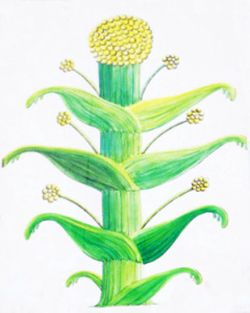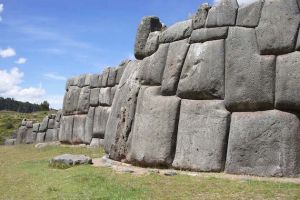Brent Swancer – On this great, green planet of ours there are innumerable species of plants, many of which have remarkable abilities and uses in the world of medicine, healing, even magic.
There are countless known plants with many purported or proven properties that we have already discovered, and there is without a doubt others yet to be uncovered out in the remote places of our world, with abilities we may not yet even be able to imagine.
Some of these have been spoken of in accounts and tales from the past, speaking of incredible effects and powers, but for which we are left with no answers as to what sort of plants they were or whether they still exist or not. These are the accounts of strange plants which are said to have existed that had some very potent and beneficial uses indeed, but which seem to have vanished into the tides of time.
One common theme of plants with supposed mystical qualities is the promise of immortality, and this has been pursued throughout the centuries in cultures all over the world. In ancient China, the search for some elixir of immortality using plants and herbs as an ingredient was a major passion and goal of alchemists across the land, and many of them believed that they had actually found it.
In texts dating back to as early as the 5th century there was mention of an elixir of life that utilized as a key ingredient one version of a mysterious mushroom known as the Lingzhi, which translates more or less to the rather unimaginative-sounding “Supernatural Mushroom.”
It was said that if one particular type this mushroom were consumed in the proper ratio with other herbs it would impart immortality and completely halt the aging process, but it is unknown just what the recipe was or what exact species of mushroom it required.

Some traditional medicine practitioners, alchemists, and sorcerers were said to know of remote locations on Mt. Penglai where the mystical and very rare mushroom supposedly grew. Only these esoteric masters knew where the mushrooms were, what they looked like, how to cultivate them, and what the exact recipe for the elixir was, and it was supposedly a jealously guarded secret they would divulge to no one, not even Emperors throughout the ages.
Many men of power ended up searching for the mushroom on their own, sending out massive expeditions in search of it with only a vague idea of what it looked like, but it is unknown if they ever found it or worked out a way to make the legendary elixir of immortality work. Although various species of mushroom are indeed used in traditional Chinese medicine for a variety of ailments, the true identity of this species of Lingzhi and its actual effects remain a mystery.
In Hindu lore there is another legendary drink variously called Amrita or Soma, which was said to grant immortality and which was crafted from some sort of unknown plant. The concoction was often claimed to be drunk by the gods as a means to achieving their everlasting life, and although rare there were occasionally mortals who had managed to brew the drink and gain immortality as well.
The thing is, while there are numerous instances in ancient Hindu texts of mortals ingesting Amrita, it is a complete mystery as to what kind of plant was used, other than the cryptic allusions to it growing in the mountains.
Equally mysterious and lost to time is how to prepare it, other than fragments such as that it must be pounded into a pulp and filtered through wool at some point, with some accounts saying it should be mixed with the milk of a cow. Other than this, the ingredients and preparation of Amrita have faded into the sands of time.
Botanists have speculated that the plant from which Amrita was derived could have been one that produces hallucinations or altered states of consciousness, perhaps something similar to psilocybin mushrooms, also commonly called “magic mushrooms,” with several species of such mushrooms having been proposed as the main ingredient of Amrita.
Others have argued that the plant was more likely in the Ephedra genus, which produces chemicals similar in nature to methamphetamines, which are called Ephedrine and Pseudoephedrine, and which are used in the traditional medicines of many cultures. Ephedra is also common in the regions where Amrita was popular.
Vessels that have been claimed to have been used for mixing Amrita have shown trace amounts of Ephedra in them, as well as opioids and cannabis, which would have certainly gotten someone pretty high, if not made them immortal. Whatever Amrita was made of or whether it really worked at all we will probably never know.

One of the most versatile and mysterious of lost plants with phenomenal properties was an herb known as silphium, which was revered throughout the ancient Roman Empire and was so rare and sought after that it was worth more than its weight in gold.
Silphium reportedly looked fairly nondescript, with stumpy yellowish leaves, fennel-like stalks, thick roots, and small yellow flowers, but its uses and properties were nearly legendary. It was considered to be a wonder medicine, purportedly able to cure and heal all manner of afflictions and diseases or protect from poisons, and it was claimed to be an effective birth control method, as drinking its sap was said to “purge the uterus.”
Ironically it also made for a potent aphrodisiac, with its heart-shaped leaves thought to have popularized this shape as a symbol of love, and its uses extended out to making perfumes, feeding it to livestock to make their meat much more tender, preserving food, and as a food itself, with the stalks roasted, sautéed, boiled, or eaten raw.
The herb was so beloved and valued in ancient Rome and the surrounding regions that it was widely written of in song, poems, and literature. The value of silphium was raised even more due to the fact that for some reason it could not be successfully cultivated or farmed, with gathering it in the wild the only way to obtain it, although no one knew why. Silphium made a fortune for the city of Cyrene, at modern Shahhat, Libya, which was the only area where the plant was known to grow, with the city even having the herb printed on their currency.
There were various efforts to try and farm or grow the herb in captivity but none of these were successful, and no one, not even the so-called “father of botany,” Theophrastus, could figure out why this should be. This was one of the reasons why Rome was so keen to annex the then Greek city of Cyrene, which they did in 96 BC. Unfortunately, this marked the steady decline of silphium.
Whereas the Greeks had had strict rules on how much of the herb to cultivate at a time, the silphium-hungry Romans quickly overharvested the plant, and as its value continued to skyrocket it was a target of black markets as well. This also combined with overgrazing, as livestock fed with silphium was said to taste remarkably better.
After the span of only around a century silphium was practically extinct, and the Roman author, naturalist and philosopher Pliny the Elder (AD 23 – 79) would lament that in his entire lifetime only a single stalk of silphium had ever been found anywhere.
It would not be long after that silphium would seemingly vanish completely from the face of the earth, leaving us with only historical accounts to go on. In modern times it is unknown just what kind of herb silphium was or even exactly what it looked like, as there are only scattered, stylized artistic representations of it, but it is thought to have been possibly related to a group of fennel-like plants called the Ferula, which are related to carrots.
However, no one really knows, and although it is speculated that this mysterious plant could still exist somewhere in the wilds of Libya, possibly right under our noses, it is likely that this ancient wonder herb will forever remain a historical oddity.

The rainforests of South America are perhaps not surprisingly without their long lost magical plants either. In the remote areas of Peru and Bolivia there have long been megalithic structures that show incredible preciseness and stonework for their time, such as the Sacsayhuaman, with its stones that look almost as if they are clay molds and huge stones as heavy as 150 tons perfectly aligned and tightly weaved together, as well as the granite walls in Cuzco, which are perfectly straight and even show signs of having been smoothed and treated with high heat. The Cuzco walls in particular attracted the attention of researchers Jan Peter de Jong , Christopher Jordan Jesus Gamarra, who speculated:
Some sort of high tech device was used to melt stone blocks which were then placed and allowed to cool next to hard, jigsaw-polygonal blocks that were already in place. The new stone would remain fixed against these stones in near perfect precision-but would be its own separate block of granite that would then have more blocks fitted into place around it and “melted” into their interlocking positions in the wall. In this theory, there would still be power saws and drills that would cut and shape the blocks as the walls were assembled.
It is unknown just how the ancient Incan people managed to move and arrange and shape these massive stones so efficiently, especially for a fairly primitive society that had no known advanced means with which to do this, and theories have swirled. One of the more unusual is the idea that these people used some sort of mysterious plant that had some unexplained chemical property that allowed them to mold and shape stone to their will.
The natives of the region apparently occasionally spoke of an unidentified plant that excreted a substance that could turn rock soft until it could be molded like clay, and they say this remarkable plant was often used by a bird they called the Montana, which fashioned its nests into sheer rock walls.
Outsiders would sometimes come across this mystery liquid, such as the adventurer Percy Fawcett, who spent a good amount of time prowling the Amazon in the early 1900s for an ancient lost city he believed to be nestled there, as well as the explorer Hiram Bingham, who discovered Machu Picchu after centuries of being lost to history. Fawcett in particular wrote much about this strange substance in his journal, and he told one such tale about this mystery plant and its birds thus:
Talking of birds, all through the Peruvian and Bolivian Montana is to be found a small bird like a kingfisher, which makes its nest in neat round holes in the rocky escarpment above the river. These holes can plainly be seen, but are not usually accessible, and strangely enough they are found only where the birds are present.
I once expressed surprise that they were lucky enough to find nesting-holes conveniently placed for them, and so neatly hollowed out – as though with a drill. “They make the holes themselves.” The words were spoken by a man who had spent a quarter of a century in the forests. “I’ve seen how they do it, many a time.
I’ve watched, I have, and seen the birds come to the cliff with leaves of some sort in their beaks, and cling to the rock like woodpeckers to a tree while they rubbed the leaves in a circular motion over the surface. Then they would fly off, and come back with more leaves, and carry on with the rubbing process.
After three or four repetitions they dropped the leaves and started pecking at the place with their sharp beaks, and – here’s the marvelous part – they would soon open out a round hole in the stone. Then off they’d go again, and go through the rubbing process with leaves several times before continuing to peck. It took several days, but finally they had opened out holes deep enough to contain their nests.
I’ve climbed up and taken a look at them, and, believe me, a man couldn’t drill a neater hole… I believe, as everyone who has watched them believes, that those birds know of a leaf with juice that can soften up rock till it’s like wet clay.
Fawcett also heard the story of a man who had come back to his camp to find the spurs on his boots had been partially melted away. The man would claim that he had recently walked through a patch of an unidentified plant about a foot in height and with dark red leaves.
In another case, a friend of his son, Brian Fawcett, allegedly found an old jar abandoned at a mining camp at at Cerro di Pasco in Central Peru, and he had thought at first that it was a bottle of an alcoholic drink called chicha. The jar was brought back to camp and at some point was knocked over to spill its contents onto the stone it had been resting upon. The friend would say of what happened next thus:
About ten minutes later I bent over the rock and casually examined the pool of spilled liquid. It was no longer liquid; the whole patch where it had been, and the rock under it, were as soft as wet cement! It was as though the stone had melted, like wax under the influence of heat.
Was there ever some mysterious plant that had a sap that could melt or soften stone to make it pliable? We may never know for sure. This has been merely a selection of the many mysterious plants with strange properties that are said to have inhabited our world, and perhaps still do.
There are certainly numerous species of plant with remarkable qualities useful for medicine and other fields that we know of, with many undoubtedly yet to be discovered in the uncharted places of our planet, and these lost specimens illustrate the sad fact that many of them may become extinct or disappear to history before we ever really know much about them or what to do with them.
Whether any of these ever existed or not is left to debate, but the the fact is that somewhere out there might be a cure for cancer, a new drug for all manner of diseases, a boost for our physical prowess, or even other more enigmatic powers, but we may never know if they disappear for good. – Mysterious Universe
SF Source Rise Earth Feb 2018
